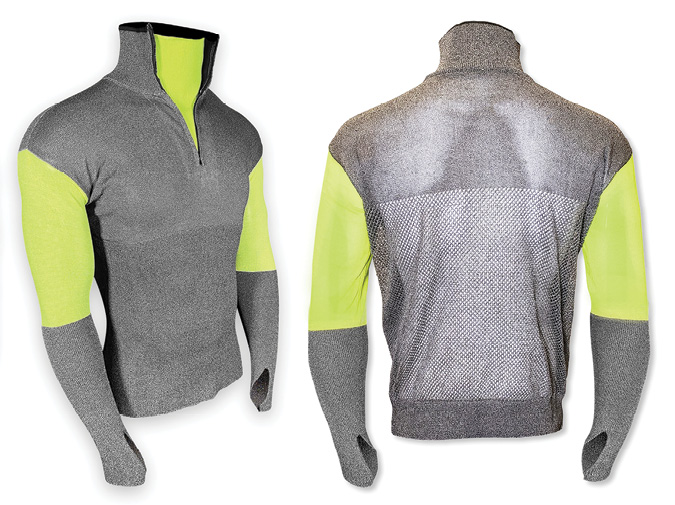PPE for Glass-specific Hazards and Conditions
Glass workers want protection, comfort and safety for themselves and their products

Ask anyone who’s been in a glass plant to describe the atmosphere and they’ll describe it as loud, hot and full of cut hazards. Regarding PPE, you might also hear “uncomfortable, itchy and ‘why do I need to wear this?’” The good news is that the hot, bulky and cumbersome safety gear of the past is being replaced by new technologies designed to keep workers safer and more comfortable.
Comfortable, safe workers
Glass workers know their work is dangerous and want to be protected from harm. But when temperatures rise and workers get sweaty and miserable, it’s human nature to cut corners—pushing protective sleeves up or down, unzipping protective clothing, removing gloves—often to cool off or stop the itch just for a moment. But those vulnerable moments can be the ones when accidents happen. While important in any industry, offering glass industry workers PPE that keeps them cooler and more comfortable is crucial.
Cut-resistant clothing
Manufacturers are using new materials, combined with advanced knitting technologies, to create lighter cut-resistant clothing that offers better protection than past PPE. Protective tops up to ANSI levels A7–A9 are 15% to 30% lighter than older products and don’t trap heat against the body. The same materials are used to create aprons and chaps for jobs requiring full-body protection. Most recently, for tasks that primarily face the cut hazard, tops are available with A7–A9 protection at the front with an A5 mesh back to release more body heat and keep workers cooler.
Protective gloves and sleeves
Glasswork is unique in that we often need to protect the product and the people handling it. New gloves explicitly developed for the glass industry allow workers to stop the common practice of double gloving for cut protection without marring glass. These new gloves offer cut protection up to ANSI Level A9 and coating options designed for the glass industry. These coatings also provide improved glass grip for safer handling and fewer accidents, and are formulated so they don’t stick to glass-specific substances like butyl.
Protective sleeves have also advanced. Available up to ANSI A9 cut protection, many sleeve materials are cool to the touch, and some at slightly lower cut levels are coreless to help prevent contact dermatitis. The comfort of these new sleeves is an entirely new experience for many workers who’ve grown used to thick, hot, itchy sleeves they can’t wait to take off.
Body-cooling PPE
Gone are the days of cooling garments that start cool but end up a warm, sweat-soaked burden after an hour on the job. The wet-wring-snap products we’ve all become used to have upped their game with body-cooling materials that cool to as low as 30 degrees below average body temperature in 60 seconds and can stay cool for up to two hours. These materials are now used to create skull caps for under hats, neck gaiters and cooling t-shirts, which are a good addition under a lighter, cooler, cut-resistant top. Some of this cooling gear is even available in FR-rated materials.
The bottom line is that your employees are far more likely to wear their PPE if it doesn’t make them miserable. Highly protective garments, gloves, sleeves and more have become comfortable enough for employees to happily wear them on the job.





